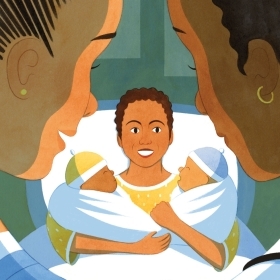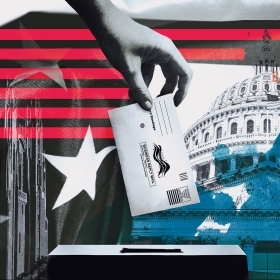On Jan. 15, 2010, I lurched out of bed at 7 a.m. and maneuvered my hugely pregnant self to the bathroom. In the dim hallway, I suddenly felt warm wetness on my legs, and saw a puddle forming on our uneven hardwood floor. My water had broken.

On Jan. 15, 2010, I lurched out of bed at 7 a.m. and maneuvered my hugely pregnant self to the bathroom. In the dim hallway, I suddenly felt warm wetness on my legs, and saw a puddle forming on our uneven hardwood floor. My water had broken. Later as my husband and I confronted traffic in the Vil on the way to Newton-Wellesley Hospital, there was definitely some fear mixed in with my jittery excitement. Of the alarmingly frequent and breathtakingly painful contractions I was feeling. And of whether I knew enough to drive home with a newborn—and then raise it. (It turns out I could manage both, with help.)
One thing I wasn’t afraid of, however, was that because of my race, the medical staff would discount what I was telling them. That is a top-tier concern for many pregnant Black women. As my classmate Lauren Young Durbin ’99 directed her husband when she was pregnant with her twins, “I need you to use all your middle-aged white male privilege to make sure I get proper care.”
Too many Black people don’t get the care they need when giving birth. The statistics are stark—the maternal mortality rate for Black women is more than three times that for white women. For American Indian and Alaska Native people, it’s more than twice as high than for white women. The disparities exist even when controlling for factors such as geography and socioeconomic status.
“If there’s one thing I want to leave you with today, it’s that poor maternal outcomes are not a pregnant woman’s problem,” said JudyAnn Bigby ’73, former secretary of the Executive Office of Health and Human Services of the Commonwealth of Massachusetts, at the Black Maternal Health Conference in Boston in April 2022. “They are an extension of disparities that we see in Black women’s health across the entire life cycle, and the root causes include social policy, health policy, racism, and misogyny.” But, Bigby continued, the fact that the Black maternal mortality crisis is rooted in such deep systemic issues does not absolve the health care system.
Fortunately, many health care workers and advocates are fighting to end the maternal mortality crisis. In “Delivering Care and Justice,” Amita Parashar Kelly ’06 speaks with Wellesley alumnae who are striving to understand and solve the complex problem in their hospitals and communities. There is great joy in the work—I encourage you to view the viral video of Lynne Lightfoote ’95, the physician on our cover, cradling the newborn twins that she and her all-Black, all-women team delivered. I cannot watch it without tearing up alongside Dr. Lightfoote.
This magazine is, as always, full of stories about people working to make a difference in their communities and classrooms. In “New Voices,” Catherine O’Neill Grace and Grace Ramsdell ’22 introduce us to five brilliant new faculty members and their fascinating research. And in “On the Ballot,” Emily Bader ’18 speaks with alumnae who ran for office in 2022. Not all of them won, and we’re just as proud of those who weren’t elected as those who were. “It was my first time running. I ran because no one else was going to do it. … You can’t win if you don’t play,” says Rebecca “Becky” Vaughan Ward ’69, who ran as a Democratic candidate for Arkansas State Senate, District 27, and was defeated. Thank you to everyone who played.

